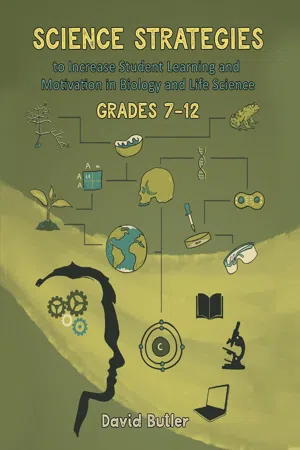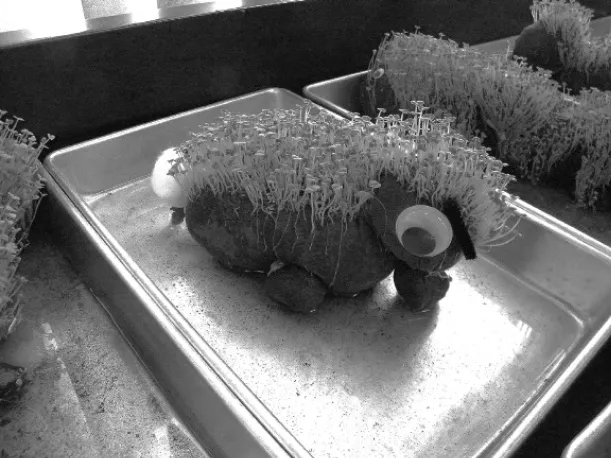
Science Strategies to Increase Student Learning and Motivation in Biology and Life Science Grades 7 Through 12
- 162 pages
- English
- ePUB (mobile friendly)
- Available on iOS & Android
Science Strategies to Increase Student Learning and Motivation in Biology and Life Science Grades 7 Through 12
About This Book
On the first day of school, have you ever thought of your classrooms as newly opened boxes of crayons? I do. Like pencil-sticks of colored wax, the students each have different names, individual characteristics, and various levels of brightness. I set a goal each year to promote not only creativity but to draw out of my students' reasons about why science is so important. As science educators, we not only need to illustrate the importance of knowing facts and terminology; but, also be able to frame those concepts in such a way that students are motivated to want to study and understand biology.
When I began teaching, I never thought that I would have the multitude of experiences I have now. I have taught in schools ranging from city to rural, public to private, and large to small; not to mention classes ranging from general science to advanced biology. Through these diverse experiences, I have developed a number of strategies that have enhanced student achievement and science appreciation. In this book, I will share with you these experiences and techniques, showing you how to enhance teaching skills, increase student drive, create mental connections, better manage your class time, use proper technology, practice forms of differentiation, and incorporate the NGSS. In addition, this text allows me to share my most treasured philosophies, experiences, and teaching strategies and how they can be applied to biology/life science classrooms.
Frequently asked questions
Information
- Pride of accomplishment
- Willingness to present
- Self-evaluation
- Sense of responsibility
- Empowers confidence
- Fosters metacognition (metaphorically, “driving one’s own brain”)
- Chia Animals
- Decomposer: Fungus Lab
- Plant and Animal Diversity Teaching Assignment
- Human DNA Extraction Lab
- Cancer: Nine-Page-Spread Project
- Insect Recipe Lab
- BioBots: An Anatomical Collage of the Human Body


Table of contents
- Key Topics to Unlock to Increase Student Learningand Motivation in Biology / Life Science
- Helping All Students Be More Successful in the Biology / Life Science Classroom
- Increasing Student Motivation in the Biology / Life Science Classroom
- Incorporating Next-Generation Science Standards to Enhance Biology / Life Science Instruction
- Differentiating Instruction More Efficiently in the Biology / Life Science Classroom
- Making the Best Use of Technology to Enhance Biology / Life Science Instruction
- Improving Understanding and Retention of Biology / Life Science Concepts
- Promoting Greater Student Success by Managing the Biology / Life Science Classroom
- Using Demos and Unusual Materials to Increase Understanding of Biology / Life Science Concepts
- Philosophy of Failing